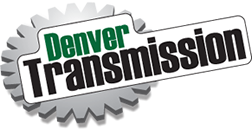Frequently Asked Questions
How does a transmission work?
A transmission uses variously sized gears to get the maximum benefit from the engine’s torque while letting it run at an appropriate speed. A transmission allows the gear ratio betweenthe engine and the drive wheels to change as the car speeds up and slows down.
What’s the difference between an automatic transmission and a manual transmission?
A car with a manual transmission has a clutch pedal and gear shift. A car with an automatic transmission has neither; the shifting is done automatically. Both types of transmission do the same thing but in different ways. They let the engine operate in its narrow speed range while providing a wide range of output speeds.

Are transmissions in European-made cars different from those in American-made cars?
The transmission design and parts in European-made cars are not the same as those found on the average American-made automobile. It takes specialized training from the manufacturer to repair and service these complicated transmission systems. The same holds true for Japanese and Korean imports.
What’s so special about the transmissions in high performance cars?
For years, most hot rods and race cars have used transmissions with sequential gearboxes and because of the advantages of this approach they are starting to be used in many high-end cars as well. The sequential shift is quicker and more consistent and the shift lever takes up less space because it only has to go forward and backward; there is no left/right motion.
What does a clutch do?
A clutch is used in devices that have two rotating shafts, one of which is usually driven by a motor while the other shaft powers another device. The clutch connects the shafts so that they can either be locked together to spin at the same speed or be disconnected and spin at different speeds. Cars need clutches because the engine spins all the time, but the wheels don’t.
What is a differential?
A differential is the mechanical device that divides the engine torque and allows each output to spin at a different speed. Because the wheels on a car sometimes spin at different speeds and move slightly different distances when turning, a device is needed to allow each to rotate at a different speed (hence the name “differential”).
What is a hybrid vehicle?
A hybrid vehicle combines an internal combustion engine and an electric motor powered by batteries, merging the best features of combustion engine cars and electric vehicles. The combination allows the electric motor and batteries to help the conventional engine operate more efficiently, cutting down on fuel use.
What are the main components of all-wheel drive and four-wheel drive systems?
The main components of all-wheel drive and four-wheel-drive system are the front and rear differentials, transfer cases, and in the case of four-wheel-drive vehicles, locking hubs. Differentials come in open, limited-slip, and locking varieties. Transfer cases are a combination of gears, shafts and drive chain that divide power between the front and rear axles. Locking hubs disconnect the front wheels from the differential and driveshaft.
Where should I take my vehicle for transmission servicing and repair?
Denver Transmission of course! Our small shop means lower overhead and lower prices. Our experience and equipment allow us to service and repair a wide range of transmissions. And our two-year unlimited mileage warranty on all repair work gives our customers peace of mind.
